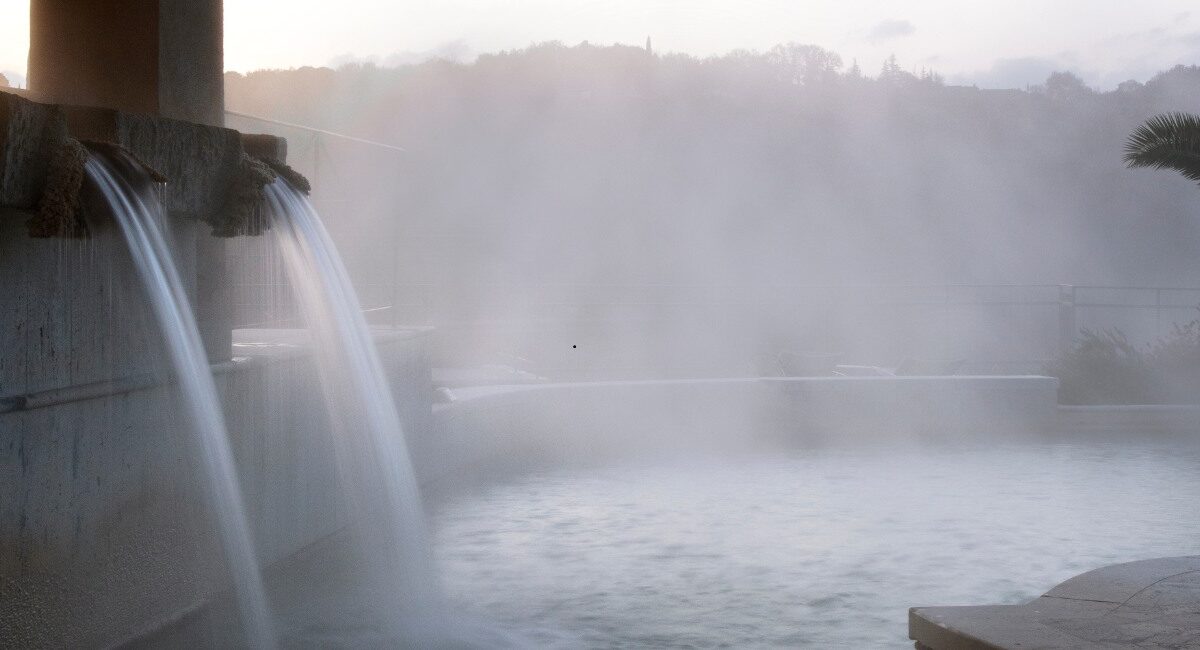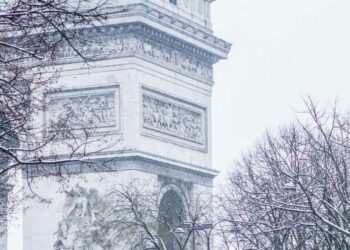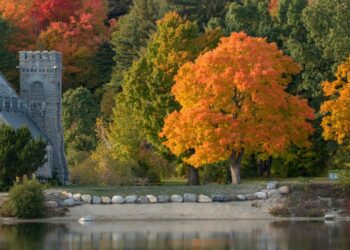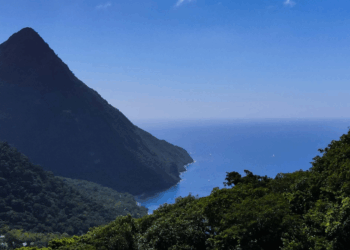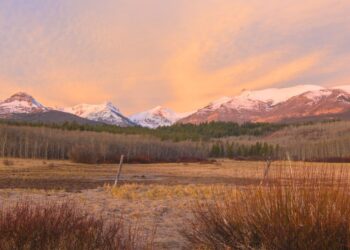I came to Tuscany expecting golden light and rolling hills, perhaps a good bottle of Brunello and worn church bells chiming in the distance. But the central Italian region doesn’t just announce itself — it unfolds. First, through cypress-lined roads standing guard and artfully dotting the landscape from all vantage points. Then come the sprawling hills and brilliant yellow rapeseed fields, casting their glow across a sea of green. And then, quite suddenly, you’re immersed in a rhythm older and slower than time.
Driving from Florence, the road snakes through the Val d’Orcia like an old film reel — one pastoral vignette after another. The hills undulate with impossible softness, lined with flocks of trees that seem choreographed rather than grown. The deeper we drove, the quieter everything became. I found myself whispering, as if speaking too loudly might ripple the landscape. The scene was cinematic — yes — but not polished. Real soil. Real stone. And finally, the arrival: Bagno Vignoni. A village so small it’s almost more of an idea than a place. Thirty-two families, one ancient bath square, and the gentle sound of water everywhere, running quietly beneath the surface.
Designed to Soothe

Elegantly set on the edge of this pocket-sized town is La Posta, a restored 1950s post office turned modern sanctuary. The building itself feels both rooted and rare — its presence more felt than flaunted. Built of local travertine and once home to the town’s grocer and original postmaster, La Posta retains its original humility, now elevated through material honesty and an almost ecclesiastical sense of proportion. Before touring my room, I indulged at Il Chiosco — the poolside bar — for a garden lunch beneath softly shaded trees. Fresh pasta, grilled vegetables, sprouted grains, and a pale Tuscan rosé arrived on simple stoneware. The food, like everything here, was intentional: spelt pasta, local Pecorino, early-season artichokes, and buffalo blue cheese layered with wild herbs. Shadows of olive branches danced across my wine glass. The sun was warm but not insistent, and beyond the terrace, the hills continued their quiet performance.
After lunch, I acquainted myself with my room. The design language of La Posta is subtle but deeply articulate. Stone floors cool the feet. Rough plaster walls in the color of unbleached linen lend a sense of aged calm. Furnishings are richly hued and tactile — olivewood, brushed metals, and ceramics that hold the fingerprints of the maker. Light moves gently through the spaces, filtered by gauzy curtains and bouncing off pale timber like it’s been trained to behave. It is not a decorative space — it’s a well-considered one. A place where every detail feels necessary rather than styled.

Each evening, I returned to my room with sun-warmed skin and mineral-damp hair. With just 35 rooms in total, the hotel never felt crowded. There’s a sense of shared privacy here — quiet nods in the corridor, soft footsteps on stone. And every night, turndown service included something charming and entirely unexpected: a short bedtime story left on my pillow.
Water Proof
And yet, the true draw at La Posta lies beneath the surface. Quite literally. Bagno Vignoni’s thermal waters have been flowing here since the Etruscans — mineral-rich, sulfur-scented, and long revered for their healing properties. At La Posta, these waters rise into three pools hidden inside manicured gardens shaded by trees. Each pool holds a different temperature, inviting guests to drift between warmth and heat, dictated only by mood or need. I soaked daily, letting the mineral waters suspend me for hours.

Conversations floated around me — ranging from beauty rituals to absurd celebrity gossip. (There’s something strangely grounding about discussing the latest royal drama while suspended in an ancient healing pool.) Laughter echoed off the stone walls. Birds fluttered in the canopy above. Local Italians waded in with the same ritualistic ease, their soft, melodic conversations folding into the landscape like an unofficial soundtrack.
One afternoon, I wandered into the spa for a facial, where the esthetician used Santa Maria Novella products — the legendary Florentine apothecary founded by Dominican monks in the 13th century. The scent alone — rose, iris, and myrrh — was a kind of invocation. The treatment was intuitive and slow, the therapist moving with the kind of touch that feels handed down. I emerged with skin like silk and a mind that felt newly rinsed.
Star Bathing
But the most unforgettable ritual came at night. Bathing Under the Stars, as it’s poetically named, is La Posta’s evening immersion — beginning at 8 p.m. There are no crowds, no music. Just the hush of water and sky. A small buffet of sweet and savory bites waits nearby, along with a glass of Champagne that catches the moonlight. Most guests slip into the pools and vanish into steam and stillness.

It was during this twilight soak, surrounded by the soft hiss of warm water and the quiet presence of strangers, that something inside me realigned. A kind of cellular quiet. A knowing that the body sometimes recognizes long before the mind does.This is wellness not as performance — but as return.
By day, the spa offers far more than pools: hydrotherapy jets, a sauna, cervical waterfalls, shaded gardens for reading, and rooms scented faintly with lemon balm. Even the olive oil at La Posta tells a story. Pressed within 24 hours of harvest, its low acidity is not just a mark of quality — but of place, of proximity. “Oil is less subjective than wine,” I was told over dinner. “It’s a fact of how, and when, and who.” And in Tuscany, who is everything.
Deep Exhale
From Bagno Vignoni, one can see both Montepulciano and Montalcino — two noble red wine regions, each with their own microclimate and vinicultural style. Between them stretch fields of wheat and wild fennel, old men on bicycles, and hills that fold into one another like linen. One afternoon, I wandered to Pienza, affectionately known as the City of Light, where Pope Pius II once imagined the perfect Renaissance town. Light bounces differently there. Even the shadows feel architectural — and the wind somehow older.
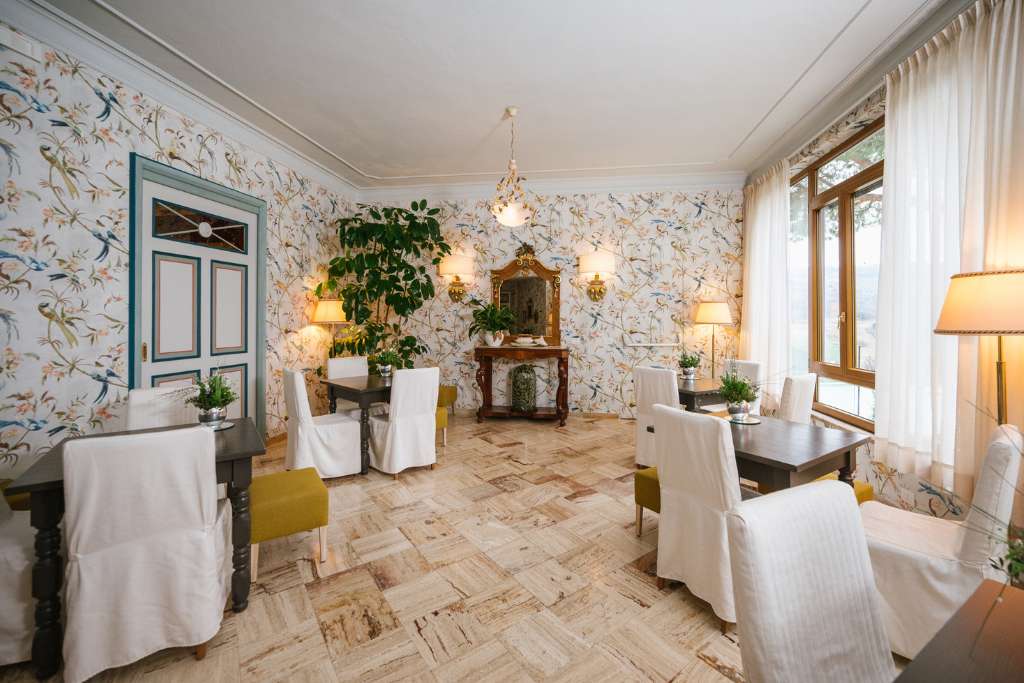
The landscape here reads like a manuscript. Cypress trees — brought from Cyprus centuries ago — aren’t just decorative. They were planted to stabilize shifting clay soil, their uprightness functional, not ornamental. Placed along roadsides and ridgelines, they feel reverent — like punctuation in an otherwise lyrical sentence.
When I left La Posta, I carried a small bottle of olive oil, a sun hat still scented faintly of sulfur, and the rare sensation of having done very little — but feeling more deeply than ever. Bagno Vignoni may not offer the drama of Chianti or the pageantry of Florence. What it offers instead is something infinitely more elusive: a kind of quiet so nourishing, you begin to wonder why you ever needed noise at all. Here, beauty is contextual. Comfort is honest. The architecture doesn’t beg to be photographed. It merely asks to be felt. And under this ancient sun, among these healing waters, design and nature share one quiet truth: The body remembers stillness. And sometimes, that is all the healing we need.
Feature image, courtesy of La Posta

